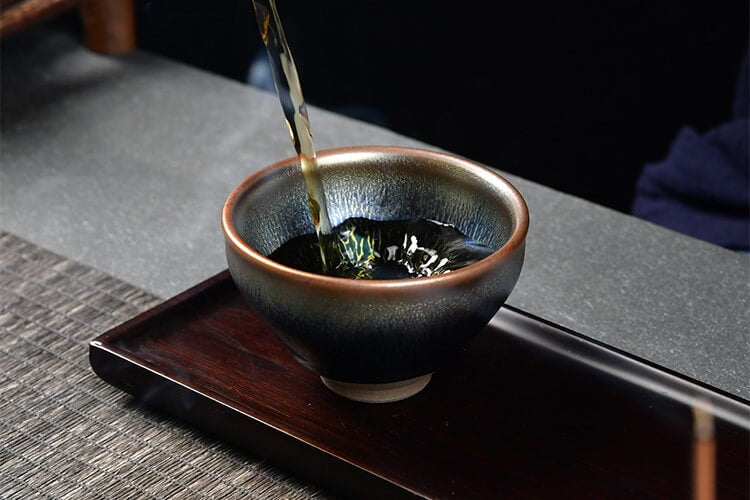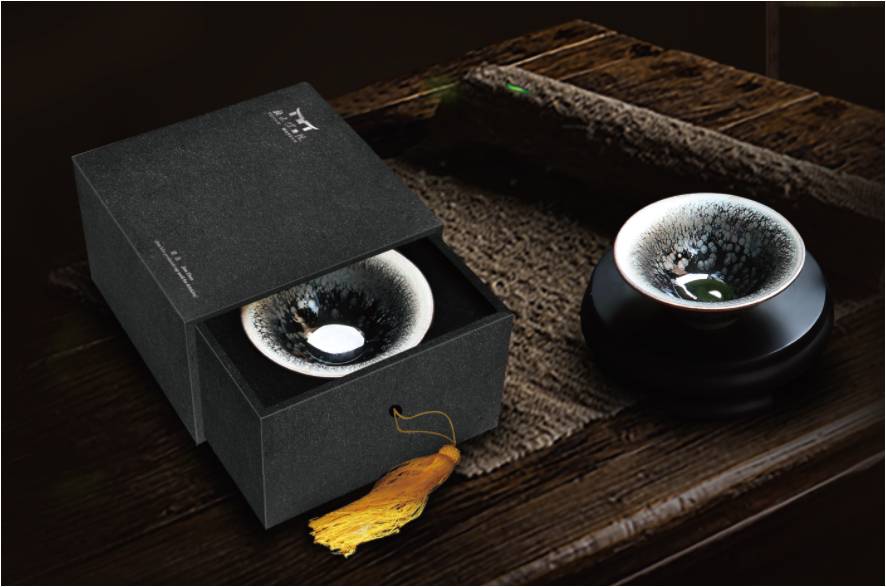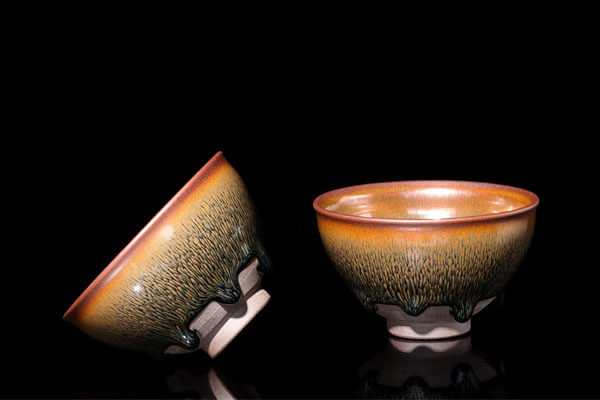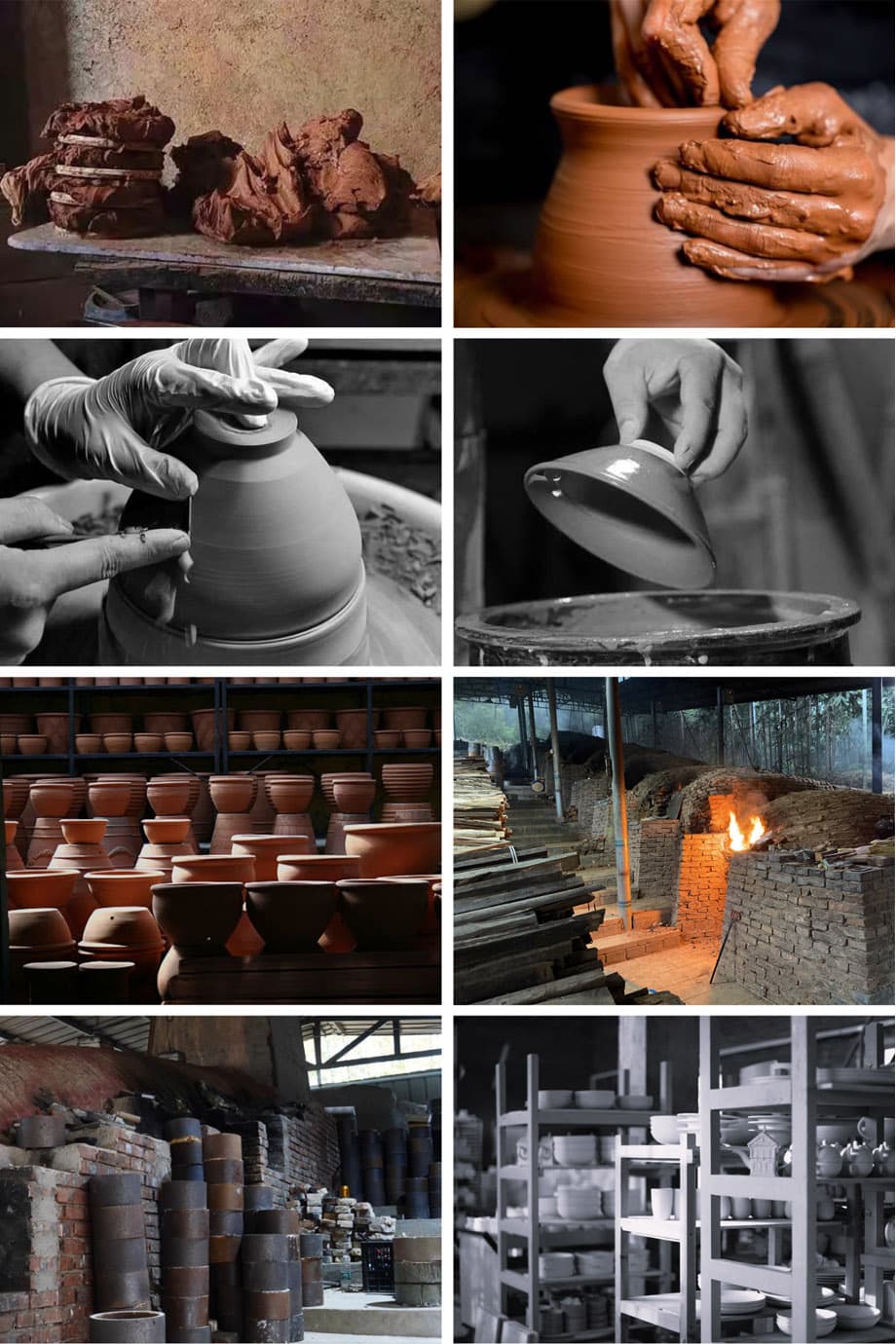
Over 72 Hours of Meticulous Handcrafting
Each piece of Tenmoku teaware is crafted with care over a period of more than 72 hours. Our skilled artisans dedicate years to mastering their craft, ensuring each item is not only functional but also a work of art. The detailed, hands-on process makes every piece truly one-of-a-kind and reflects the high standards of craftsmanship we value deeply.
Own a True Masterpiece of the Teaware World
Tenmoku teaware stands out for its distinctive shape and specialized glaze. The jian zhan tenmoku tea cups feature a wide-brimmed bowl design that allows tea to steep and cool naturally. Fired at extremely high temperatures, the glaze—rich in iron—creates a deep black finish with unique, mesmerizing patterns that are exclusive to jian zhan tenmoku pottery. It is an ideal choice for your home decoration art.
A Sophisticated Gift with Elegant Packaging
These finely crafted Tenmoku tea pieces make thoughtful and stylish gifts for any occasion. Whether shop for yourself or a loved one, they’re perfect for weddings, birthdays, holidays, office gatherings, housewarmings, or family celebrations. Each item is beautifully packaged in an elegant presentation box, ready for gifting.
Enhances Flavor and Retains Heat
Jian zhan tenmoku tea cups are praised for making any beverage—tea, coffee, or even water—taste smoother and richer. Their special composition, including high iron and sand content along with a thick glaze and cup body, helps retain heat longer and subtly adjusts the tea's alkalinity. This not only preserves the flavor but also brings out the full aroma and depth of the tea.
-
Clay Selection:
The clay and glaze used in Jian Zhan ceramics require a high iron content. While other kilns during the Song Dynasty attempted to replicate Jian Zhan, they often failed because the mineral composition in their local materials couldn't meet the necessary standards for producing authentic Jian Zhan. -
Crushing:
The prepared clay and glaze are then placed into a machine for pulverization. -
Washing and Sieving:
The clay or glaze should have a moderate thickness. After sieving, the clay is placed in a slurry tank, while the glaze is transferred to a glaze pool. -
Chen Fu (Ceramic Terminology):
Chen Fu refers to storing the clay in a room away from sunlight and air, maintaining a consistent temperature and humidity, allowing it to rest for a period. -
Kneading the Clay:
This step further removes air and impurities from the clay, making it denser and more uniform in moisture content. It also ensures the clay remains workable and prevents it from drying out or cracking during later stages of production. -
Shaping:
Shaping is typically divided into hand shaping and machine shaping. -
Modification:
Traditional Jian Zhan shapes usually feature a shallow circular foot. Both the base and the “inner ring” of the foot are refined using a knife. -
Kiln Firing of Unglazed Jian Zhan:
This step helps increase the mechanical strength of the clay while also allowing any cracked or fragile pieces to be removed in advance. -
Glaze Blending:
The traditional glaze formula combines natural iron ore glaze with plant ash. These simple ingredients create an exquisite glaze, yet the craft of Jian Zhan lies in using the most basic materials to form the intricate crystal patterns that make it unique. -
Glazing:
A distinctive feature of Jian Zhan is its half-glaze technique. Craftsmen carefully design a glaze line to control the glaze's coverage. The glazing process requires great skill—if the glaze is too thin, it won't allow crystals to form properly; if it's too thick, it could cause the glaze to stick to the bottom. -
Kiln Placement:
To prevent sticking, a layer of alumina powder is often placed at the bottom of the kiln. -
Kiln Firing:
The firing process is crucial for creating Jian Zhan. Precise control of time, temperature, and reduction frequency is essential to achieve the desired glaze color. The master must be vigilant, adjusting the reduction process and avoiding long periods of absence during firing. -
Post-Kiln Finishing:
After firing, defects often occur due to various factors in the production process. These imperfections must be addressed on-site. Only pieces that pass quality inspection are deemed suitable for sale.

You may also like
Recently viewed
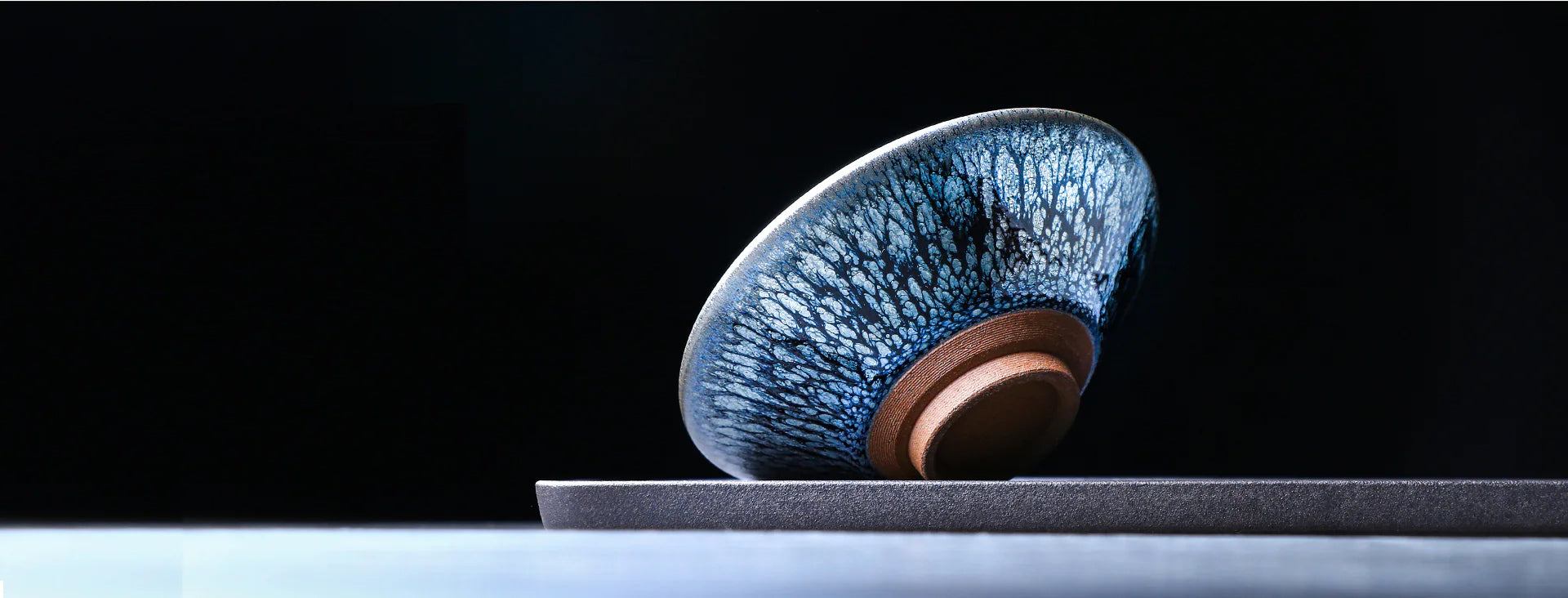
A Gift of Soul
A Millennium’s Craft
100% Handmade Tenmoku Tea Cups & Bowls. 1000 Years Unrepeatable Ancient Jianzhan Handcraft Art.





























